1. Weebles
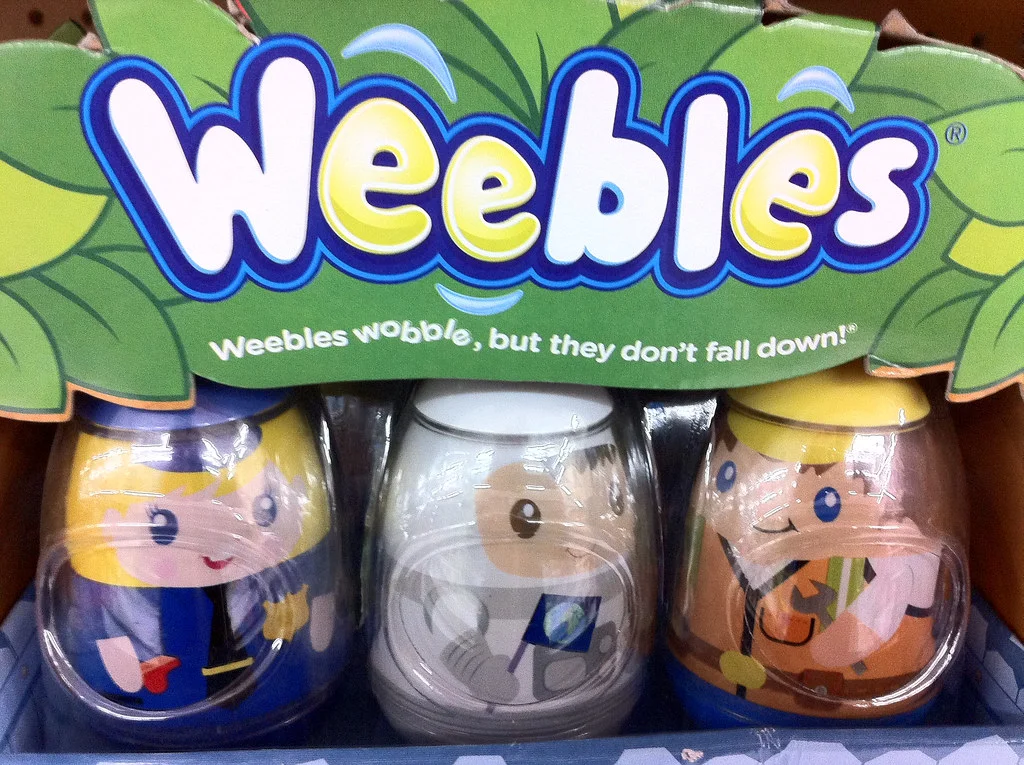
Weebles were those egg-shaped little figures that wobbled but never toppled over. They had a rounded bottom filled with weight that made them spring back upright no matter how much you pushed them. Sets came in themes like families, pets, and even cars and houses, so kids could build little communities of wobbling figures. The catchphrase “Weebles wobble, but they don’t fall down” became one of the most memorable toy slogans of the ’70s.
What made them so special was their simplicity. You didn’t need batteries or complicated parts, just a child’s imagination and a few Weebles to keep the fun going. Kids could spend hours inventing stories with their little characters, while parents appreciated that they didn’t break easily. For many, the cheerful wobble of a Weeble still brings back warm memories of childhood play.
2. Evel Knievel Stunt Cycle
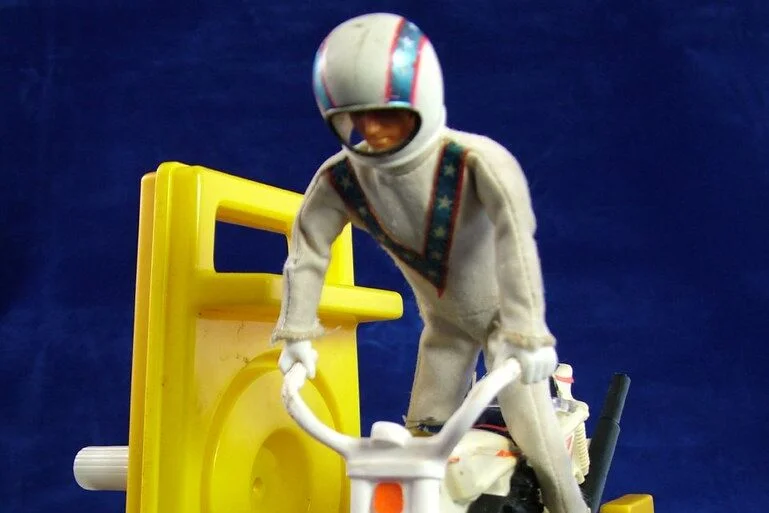
Inspired by the daredevil himself, the Evel Knievel Stunt Cycle was a must-have for thrill-seeking kids. You’d place the toy motorcycle on its launcher, crank it up, and let Evel fly off ramps or across the living room floor. The toy captured the excitement of Knievel’s real stunts, and kids loved seeing how far they could make him go. It felt like having your very own stunt show at home.
Of course, he didn’t always stick the landing, which made it even more entertaining. Sometimes Evel went flying into walls, furniture, or even family pets, causing endless laughter. The toy’s durability was part of its charm—it could take a beating and keep going. For many kids, the Evel Knievel Stunt Cycle was the closest thing to feeling like a daredevil themselves.
3. Stretch Armstrong
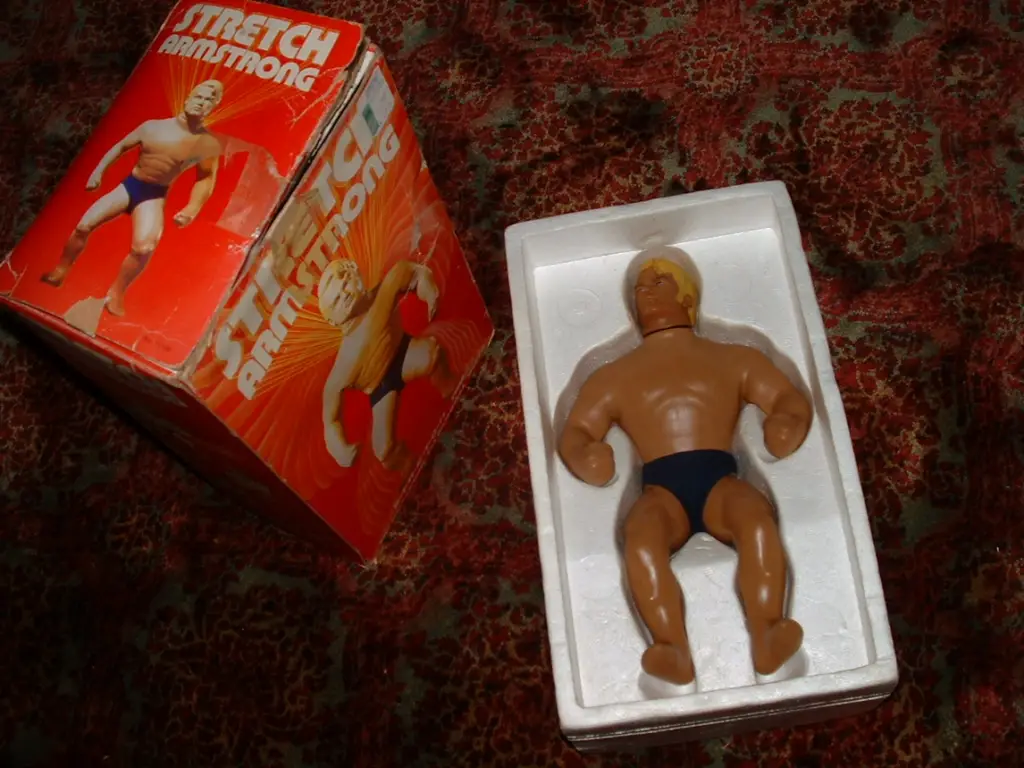
Stretch Armstrong wasn’t just any action figure—he was famous for how far you could pull his arms and legs without breaking him. Filled with a strange gel-like substance, he could stretch to several times his normal size and then return to shape. Kids tested his limits by tying him between chairs or pulling him across the room. He was the ultimate test of playground bragging rights.
But the secret filling wasn’t indestructible, and many kids remember the heartbreak of a leaking Stretch Armstrong. That goo inside was sticky and mysterious, only adding to the toy’s legend. Despite the occasional disaster, Stretch remained one of the most unique toys of the decade. He showed that a toy didn’t need fancy accessories to spark endless imagination.
4. Big Wheel
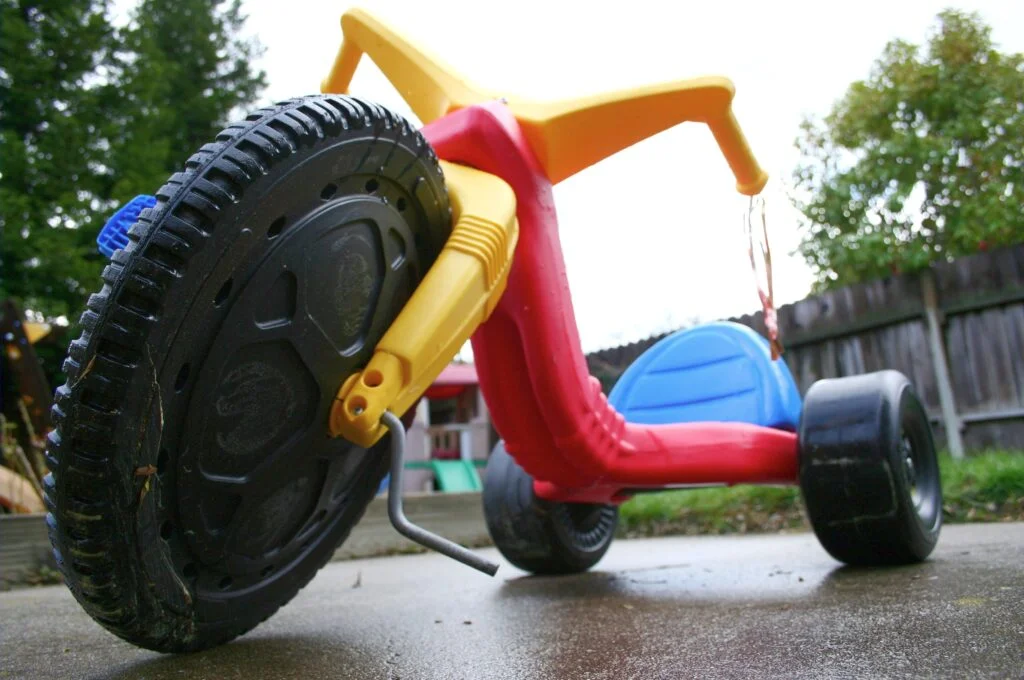
The Big Wheel was the ride-on tricycle that almost every kid wanted parked in their driveway. With its oversized front wheel and plastic body, it gave children a sense of speed and independence. Kids raced down sidewalks, spun around in circles, and slammed to a stop with the handbrake. It was loud, fast, and totally thrilling.
Parents loved them because they were safer than a bike, but kids loved them because they felt daring. Neighborhood races often ended with squealing tires and laughter echoing through the block. Some kids even decorated theirs with stickers or streamers to stand out. To this day, just the sound of plastic wheels scraping on pavement can bring back Big Wheel memories.
5. Lite-Brite
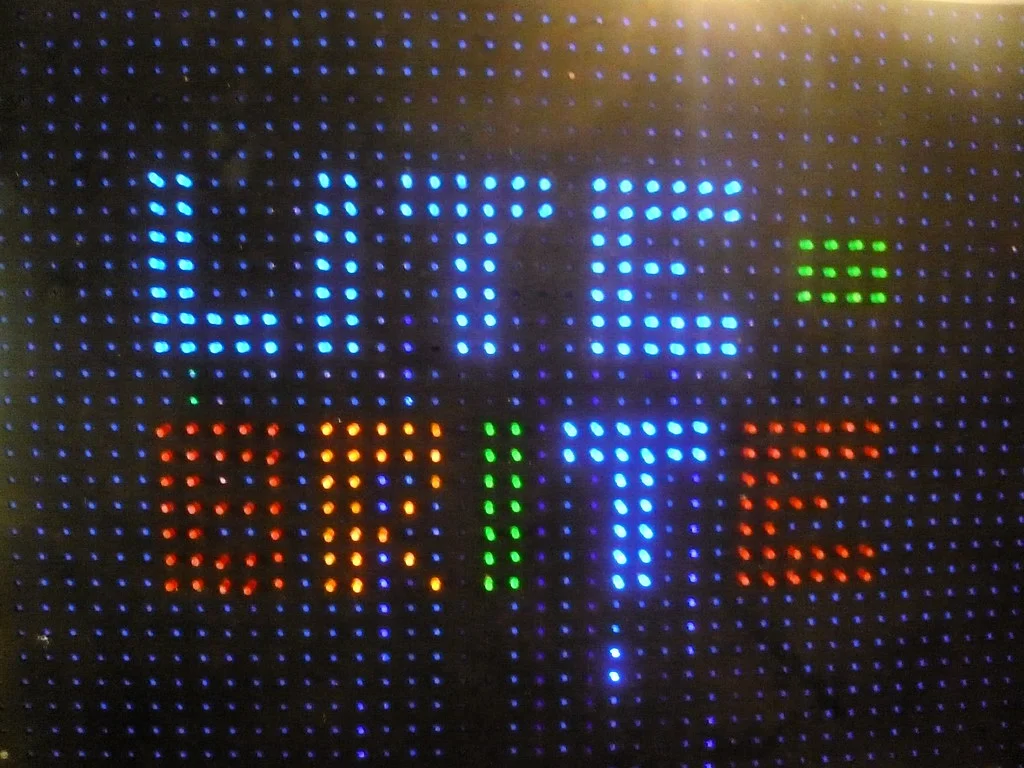
Lite-Brite was a toy that encouraged creativity by letting kids make glowing designs out of colorful pegs. You’d push the tiny plastic pegs into a black paper background, and the light from behind made your picture shine. Designs could be guided with templates, or kids could free-style their own creations. It was part puzzle, part art project, and all magic.
The glow of the Lite-Brite in a dark room felt almost futuristic. Kids often spent hours making patterns and showing them off to their families. Of course, stepping on those tiny pegs was no fun, and they seemed to scatter everywhere. Still, Lite-Brite gave kids the chance to make art in a way that felt new and exciting.
6. Clackers
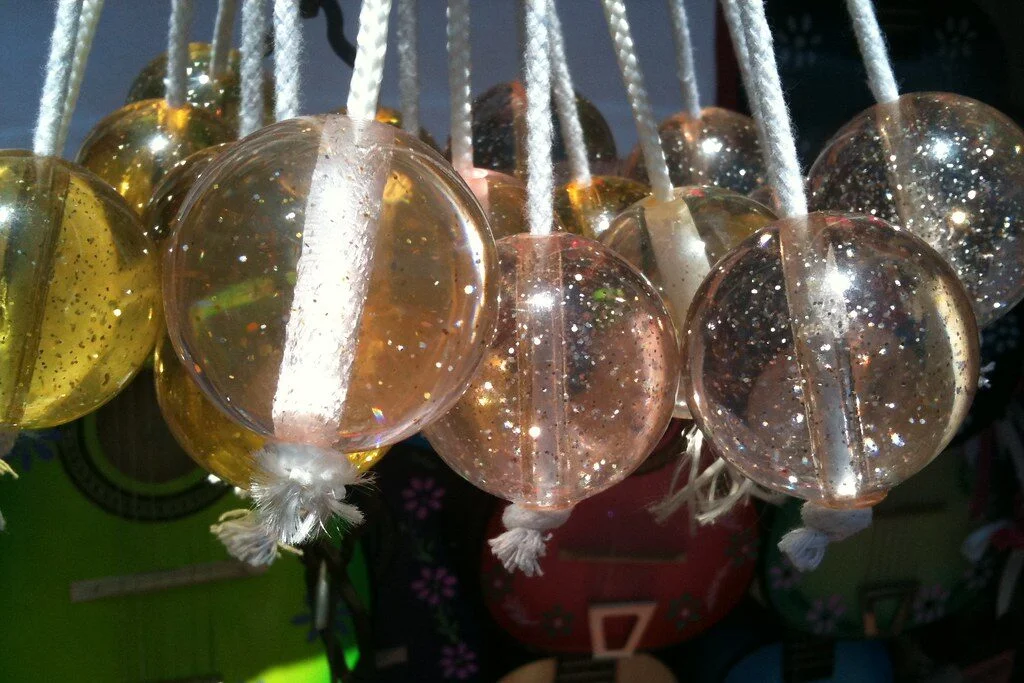
Clackers were two acrylic balls attached by a string that you swung up and down to make them smack together. The challenge was to keep the rhythm going until they clicked smoothly above and below your hand. Kids practiced for hours to master the trick, and once you got the hang of it, the sound was strangely satisfying. They were equal parts toy and skill test.
But Clackers weren’t exactly safe, and many kids ended up with bruised arms or cracked toys. The acrylic balls sometimes even shattered, which led to them being pulled from shelves. Despite the risks, they were wildly popular for a short time. Anyone who had a pair instantly became the center of attention at recess.
7. Shrinky Dinks
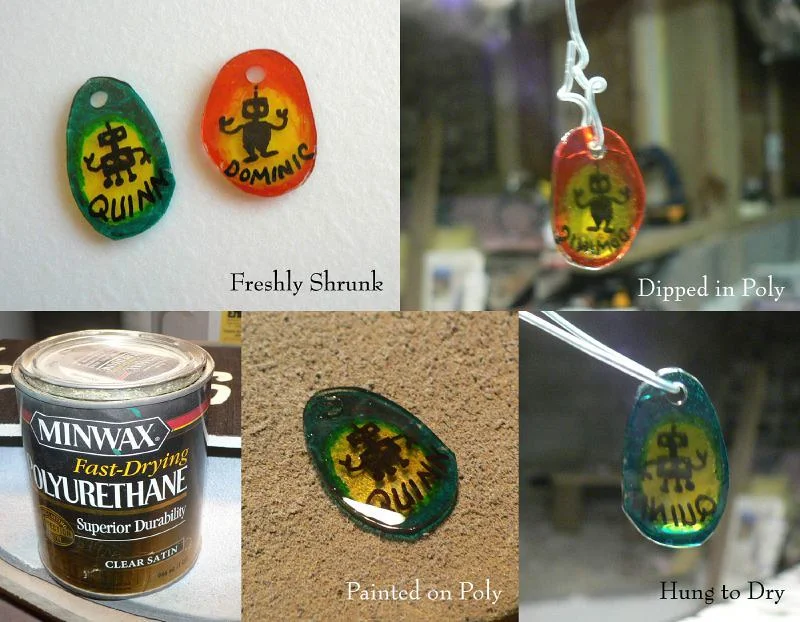
Shrinky Dinks gave kids the thrill of creating something with their own hands. You’d color a sheet of plastic, cut it out, and then place it in the oven. Within minutes, it would shrink into a hardened miniature version of the design. It was like magic, watching your drawing transform before your eyes.
The best part was showing off the final creations, which often became keychains, charms, or little keepsakes. Parents liked them too, since they encouraged kids to sit down and craft. The oven part did require supervision, which added a sense of importance to the project. Shrinky Dinks were proof that simple arts-and-crafts toys could capture imaginations just as much as action figures.
8. Rock ’Em Sock ’Em Robots
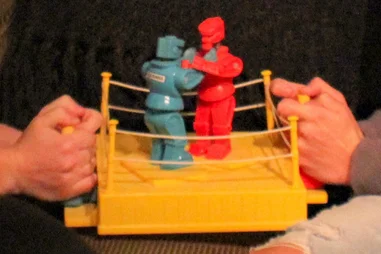
This toy brought boxing into the playroom with two plastic robots that kids controlled using levers. Each player tried to land a punch that would pop the other robot’s head up, signaling a knockout. Matches were fast, loud, and full of laughter. It felt like an arcade game you could play at home.
The game became a battle of quick reflexes and strategy, and kids often staged tournaments with their friends. The clacking of the robots punching away became instantly recognizable. While simple, it captured the spirit of competition perfectly. Rock ’Em Sock ’Em Robots turned every living room into a mini boxing ring.
9. Simon
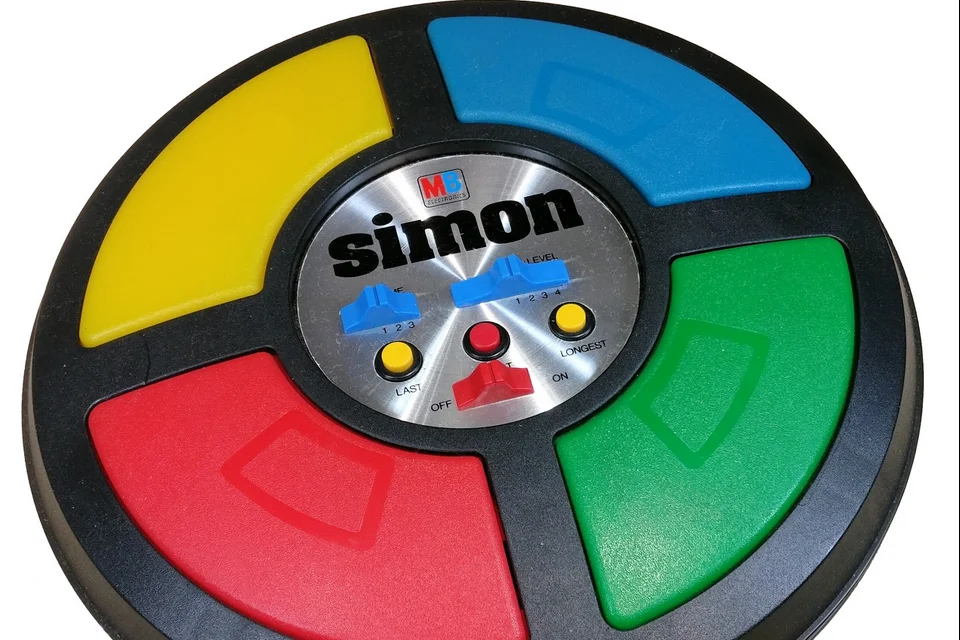
Simon was one of the first big electronic memory games, and its flashing lights were hypnotizing. The round device had four colored buttons, each making a different sound. The game would play a sequence, and kids had to repeat it back correctly. It started simple but quickly became a test of focus and memory.
The challenge was addicting, and kids played over and over to beat their high score. It was perfect for both solo play and family competition. The futuristic look and electronic sounds made it feel high-tech in the ’70s. Simon was one of those toys that seemed ahead of its time, and it still pops up in retro toy collections today.
10. Spirograph
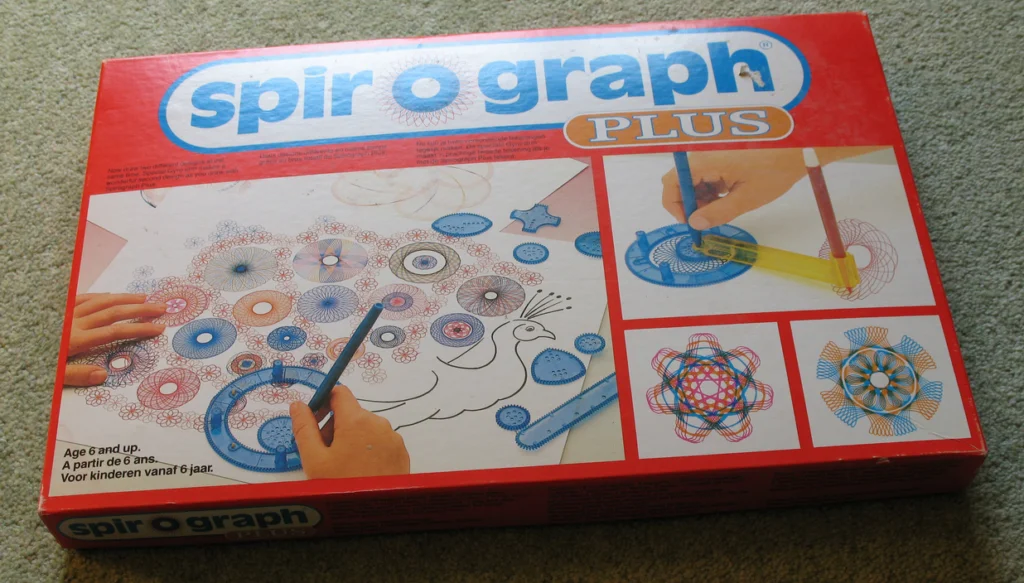
Spirograph was all about turning math into art. With a set of plastic gears and pens, kids could create mesmerizing spiral designs. Each new pattern felt unique, and the combinations seemed endless. It was an educational toy disguised as pure fun.
Parents liked that it encouraged creativity without being messy. Kids liked that the final designs looked fancy enough to hang on the fridge. Many remember the satisfaction of watching the shapes come together in bright colors. Spirograph made kids feel like real artists with just a few gears and a pen.
11. Water Wigglers
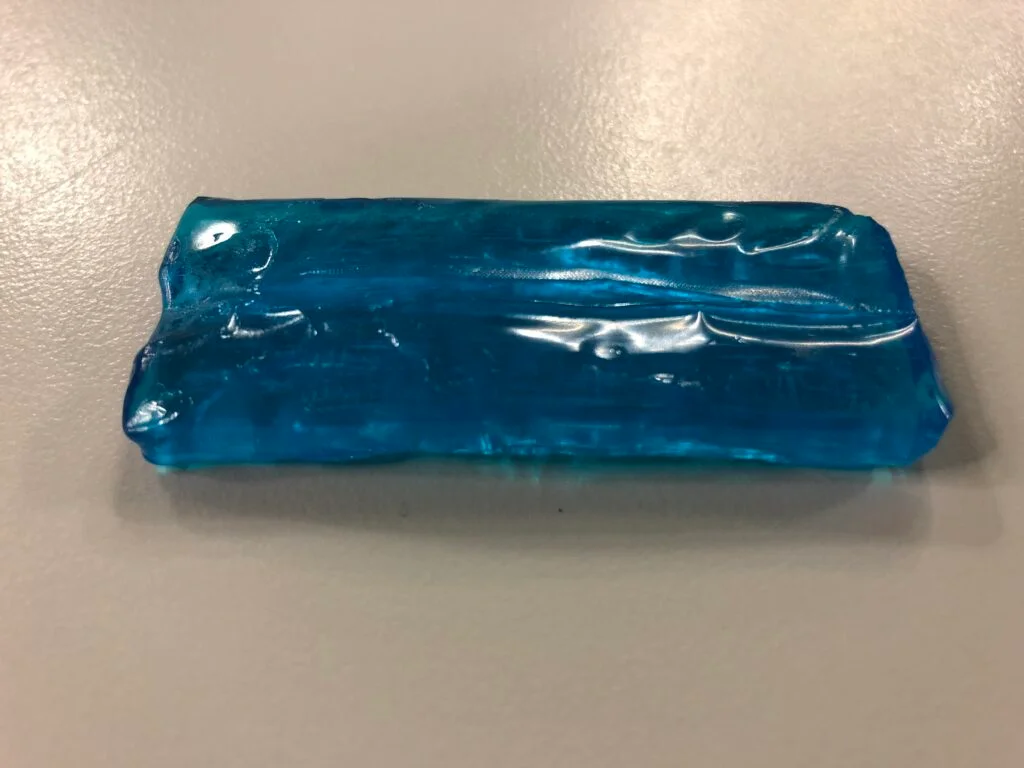
Water Wigglers were tricky little tubes filled with liquid that slipped right out of your hands when you tried to grab them. They were small, squishy, and oddly mesmerizing to play with. Kids challenged themselves to hold onto them, but the toy always wriggled free. It was part frustration, part fascination.
Sometimes they had glitter or tiny objects floating inside, which made them even more fun to watch. They didn’t really “do” much, but kids were drawn to the slippery challenge. They were the kind of toy you couldn’t put down once you picked it up. Water Wigglers were a perfect example of how simple ideas could entertain endlessly.
12. View-Master
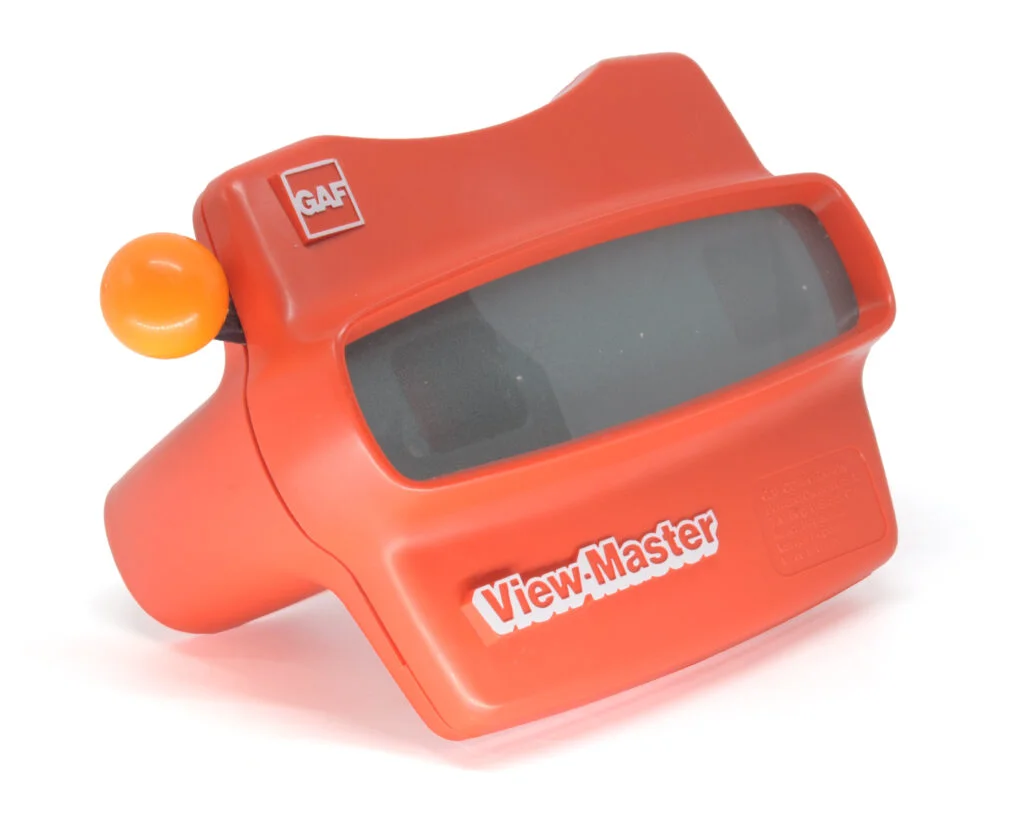
The View-Master gave kids the magic of watching 3D images with just a click. Insert a round reel, hold it up to the light, and suddenly you were transported to a different world. Reels included everything from cartoons to travel scenes, making it both fun and educational. The bright, crisp images made it feel like stepping into a mini movie.
Collecting reels became a hobby, with kids swapping them to see different sets. It was quiet, imaginative fun that felt almost high-tech for its time. Parents liked that it didn’t require batteries or make noise. For many kids, the View-Master was their first window into faraway places.
13. Easy-Bake Oven
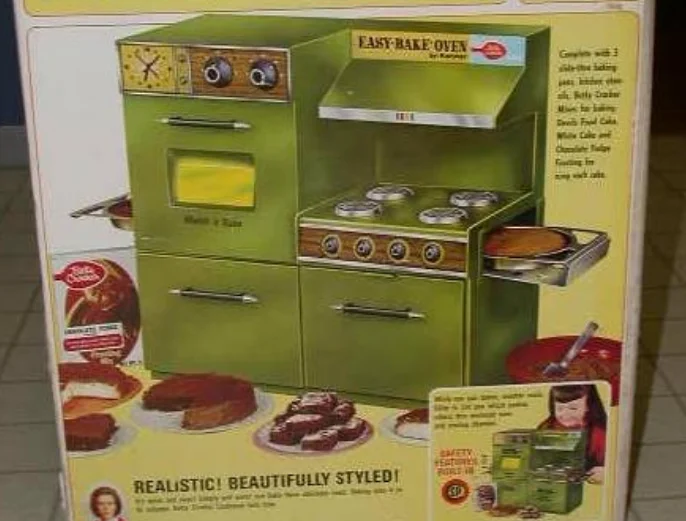
The Easy-Bake Oven let kids feel like real chefs by baking tiny cakes and cookies with a simple light bulb. It came with little mixes and pans, and the thrill of making your own dessert was unmatched. Kids loved the independence of cooking something themselves. The results weren’t always perfect, but they were always exciting.
Sharing your creations with family made it even more special. It gave kids a taste of responsibility and pride in their work. Parents appreciated that it encouraged learning in the kitchen. The Easy-Bake Oven became one of the most memorable toys of the decade because it was both fun and practical.
14. Hungry Hungry Hippos
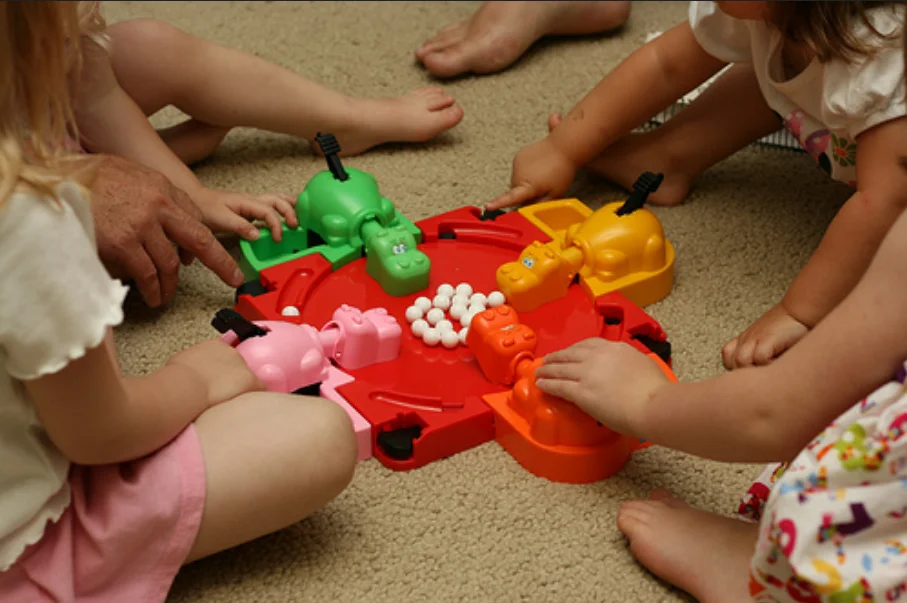
This fast-paced game had four colorful hippos chomping down on marbles as quickly as possible. Kids slammed the levers to make their hippo eat the most marbles, turning it into a noisy frenzy of competition. The clattering sound of marbles bouncing around was unforgettable. It was simple, chaotic fun.
Games were short, which made it easy to play over and over again. Kids often laughed as much as they competed, since the hippos sometimes missed their mark entirely. It was the perfect game for family night or after-school hangouts. Hungry Hungry Hippos was proof that the loudest toys often made the best memories.
15. Pet Rock
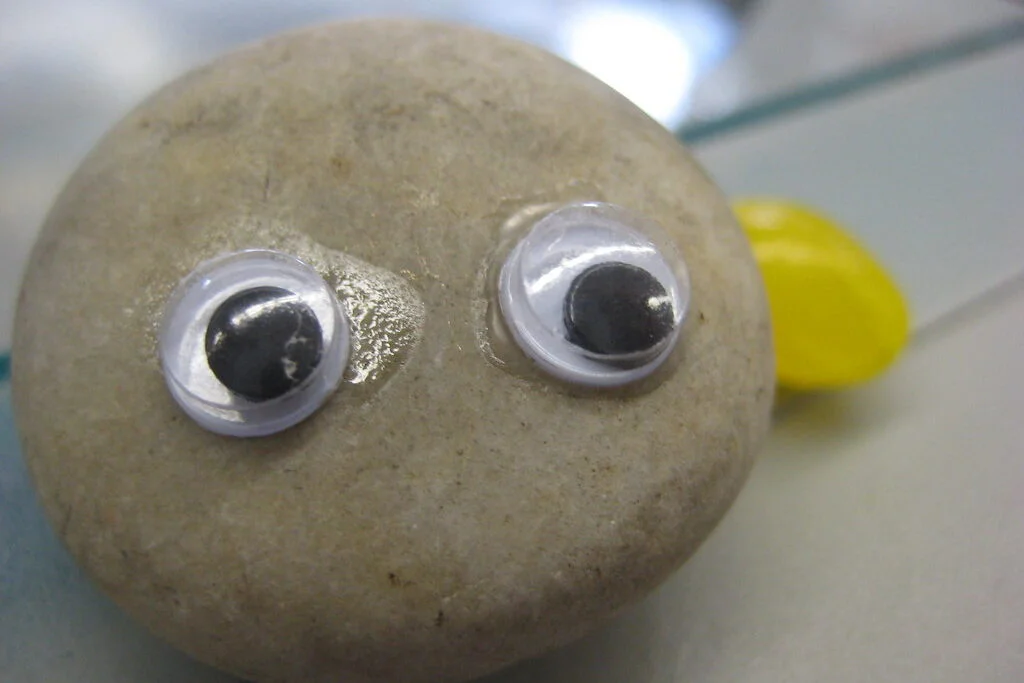
Pet Rocks were one of the oddest fads of the ’70s, but kids couldn’t get enough of them. Sold in cardboard boxes with breathing holes, they came with instructions for “caring” for your rock. It was part joke, part collectible, and somehow it worked. Kids loved showing off their perfectly smooth new “pet.”
Some even decorated them with paint or googly eyes, turning them into little characters. Parents loved the low-maintenance aspect, since it was the cheapest “pet” around. It was silly, but it captured the playful spirit of the decade. The Pet Rock may have been a short-lived craze, but it’s still one of the most famous toy fads in history.
16. Snoopy Sno-Cone Machine
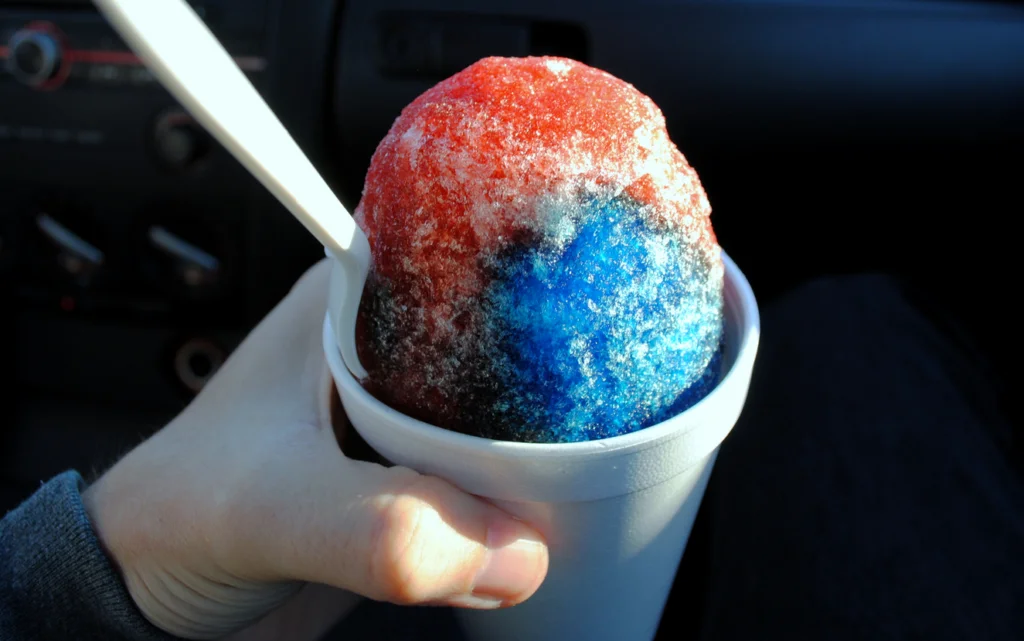
The Snoopy Sno-Cone Machine was every kid’s dream on a hot summer day. You’d crank blocks of ice through the machine, and out came crushed ice ready for flavored syrup. It felt like running your very own concession stand, complete with a fun Peanuts theme. Kids loved being able to “serve” treats to their friends and family.
The machine wasn’t always easy to use—turning the crank took real effort—but that made it feel like a big accomplishment. The colorful cups and syrups added to the excitement. Parents appreciated that it was a toy with a tasty payoff at the end. For many, the Snoopy Sno-Cone Machine was a perfect mix of fun and refreshment.


